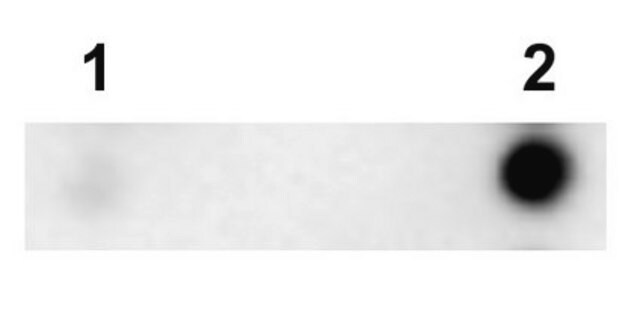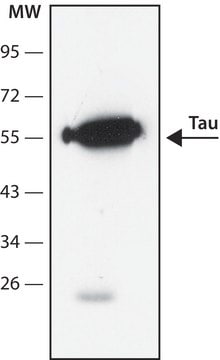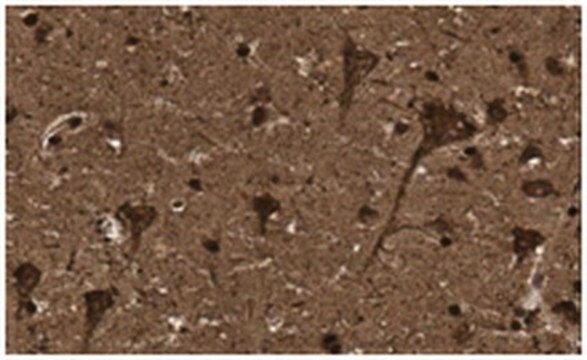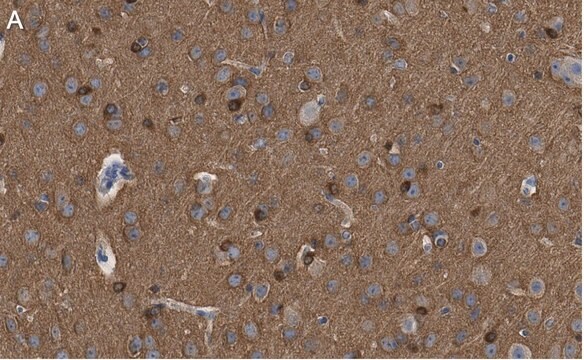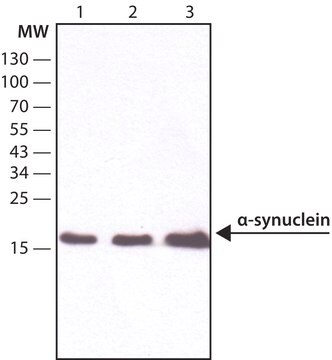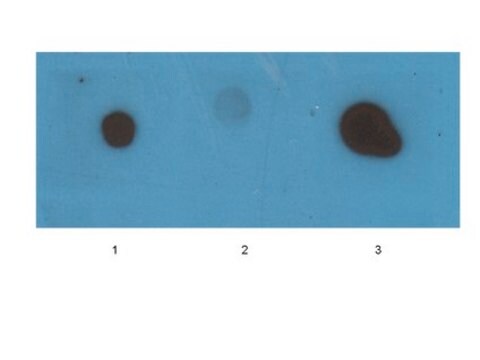MABN819
ANTI-TAU (MAPT) Antibody
mouse monoclonal, TOMA-1
동의어(들):
Microtubule-associated protein tau oligomer, Tau oligomer, PHF-tau oligomer, Paired helical filament-tau oligomer, Neurofibrillary tangle protein oligomer
About This Item
추천 제품
제품명
Anti-Tau Antibody, oligomeric Antibody, clone TOMA-1, clone TOMA-1, from mouse
생물학적 소스
mouse
Quality Level
항체 형태
purified immunoglobulin
항체 생산 유형
primary antibodies
클론
TOMA-1, monoclonal
종 반응성
rat, human, mouse
종 반응성(상동성에 의해 예측)
mammals (based on high homology)
기술
ELISA: suitable
dot blot: suitable
immunofluorescence: suitable
immunohistochemistry: suitable
neutralization: suitable
western blot: suitable
동형
IgG2aκ
NCBI 수납 번호
UniProt 수납 번호
배송 상태
ambient
타겟 번역 후 변형
unmodified
유전자 정보
human ... MAPT(4137)
mouse ... Mapt(17762)
rat ... Mapt(29477)
일반 설명
특이성
면역원
애플리케이션
Neuroscience
Please refer to the following publications regarding the use of TOMA clones in Dot Blot, ELISA, Immunofluorescence, Immunohistochemistry, Neutralization, and Western Blotting applications:
1. Vuono, R., et al. (2015). Brain. 138(Pt 7):1907-1918.
2. Castillo-Carranza, D.L., et al. (2015). J. Neurosci. 35(12):4857-4868.
3. Castillo-Carranza, D.L., et al. (2014). J. Neurosci. 34(12):4260-4272.
품질
Western Blotting Analysis: 4 µg/mL of this antibody detected Tau oligmers in 25 µg of Alzheimer′s diseased human brain lysate.
표적 설명
물리적 형태
저장 및 안정성
기타 정보
면책조항
적합한 제품을 찾을 수 없으신가요?
당사의 제품 선택기 도구.을(를) 시도해 보세요.
Storage Class Code
12 - Non Combustible Liquids
WGK
WGK 2
Flash Point (°F)
Not applicable
Flash Point (°C)
Not applicable
시험 성적서(COA)
제품의 로트/배치 번호를 입력하여 시험 성적서(COA)을 검색하십시오. 로트 및 배치 번호는 제품 라벨에 있는 ‘로트’ 또는 ‘배치’라는 용어 뒤에서 찾을 수 있습니다.
자사의 과학자팀은 생명 과학, 재료 과학, 화학 합성, 크로마토그래피, 분석 및 기타 많은 영역을 포함한 모든 과학 분야에 경험이 있습니다..
고객지원팀으로 연락바랍니다.
